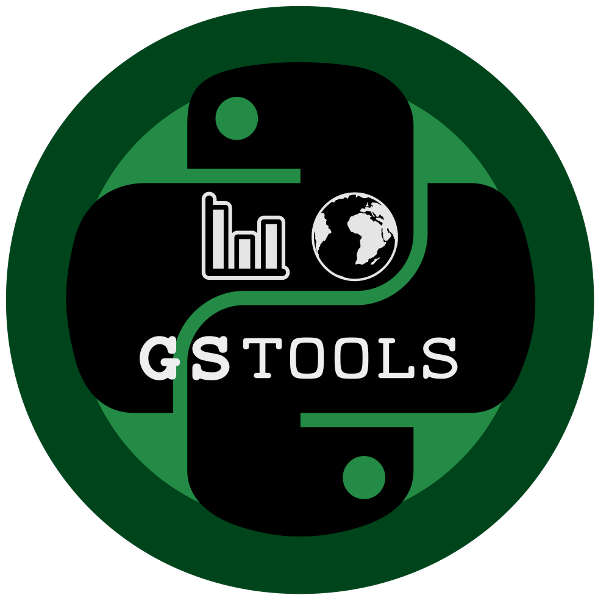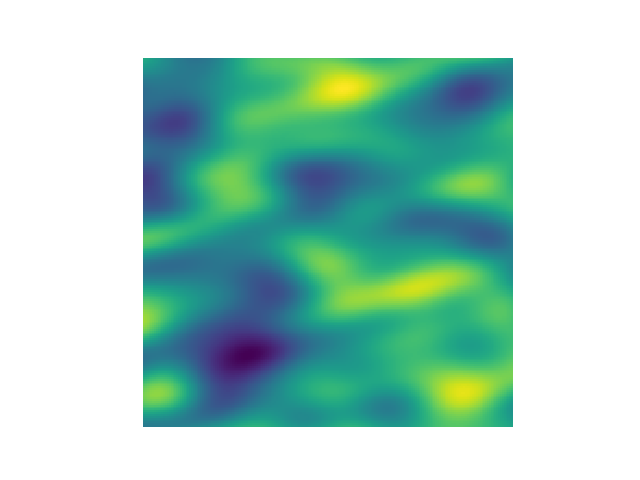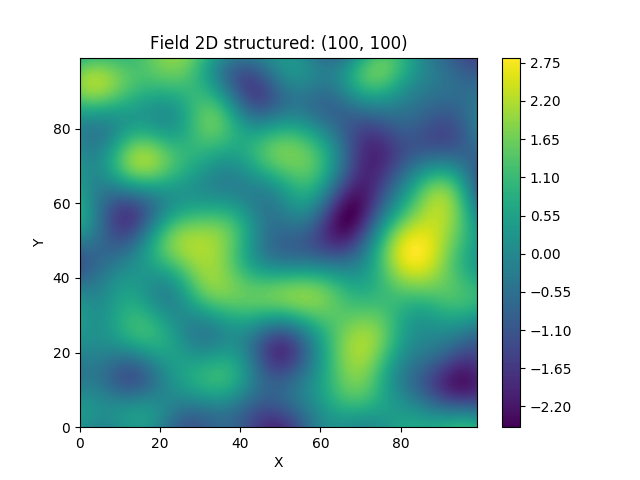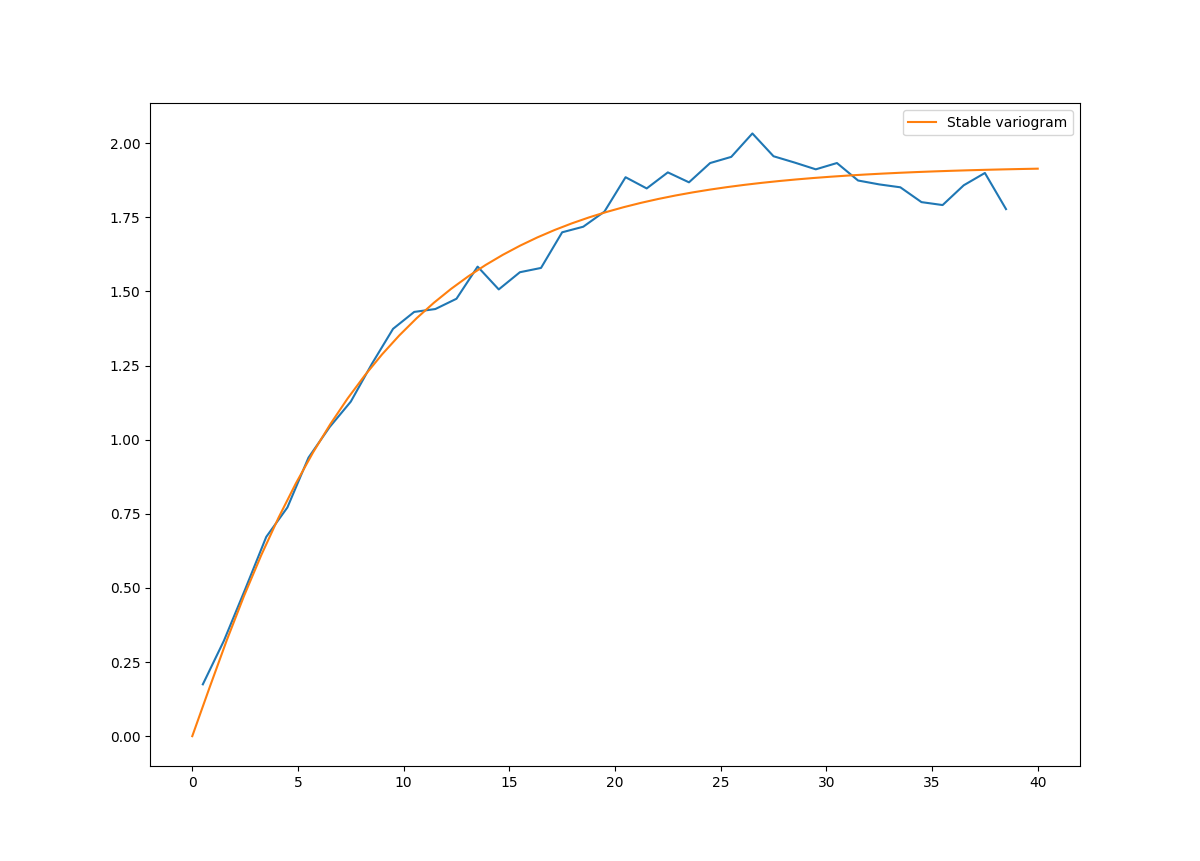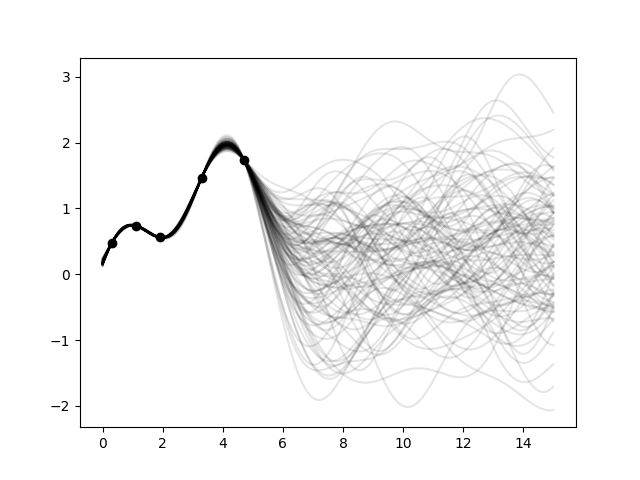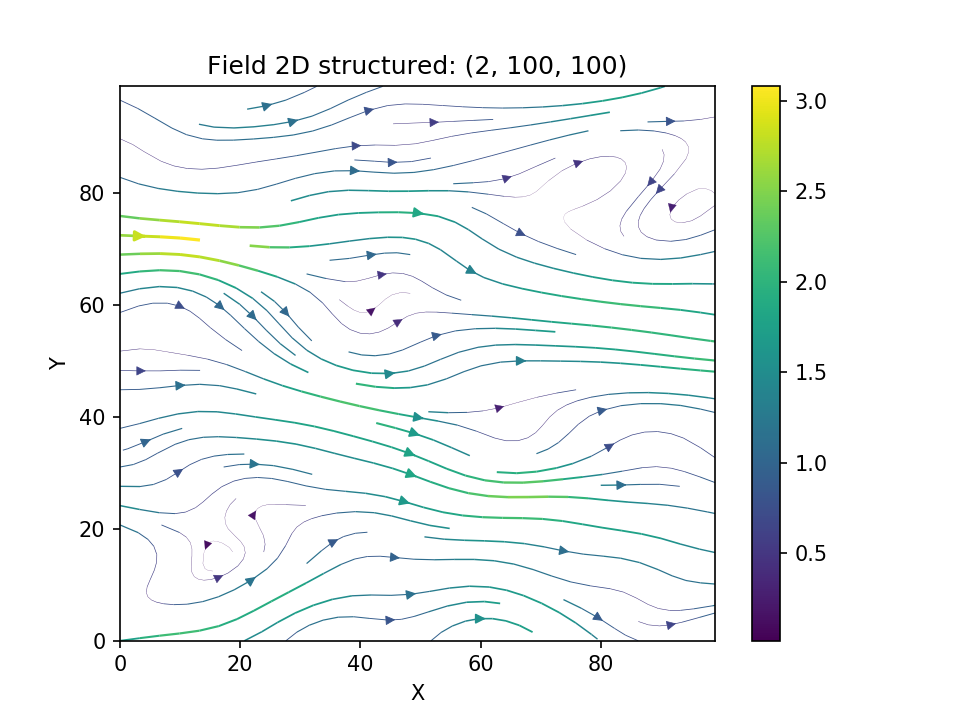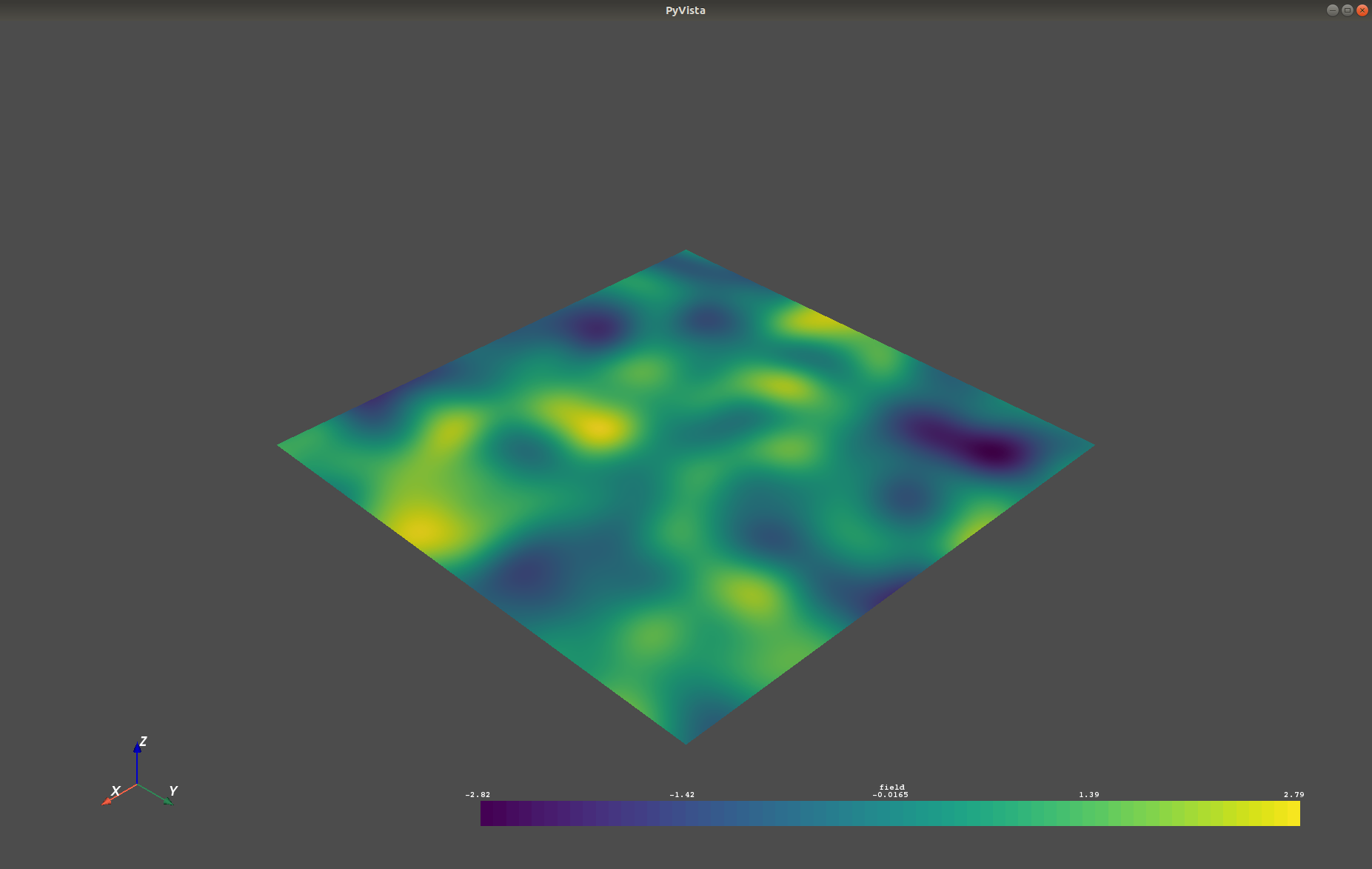GeoStatTools provides geostatistical tools for various purposes:
- random field generation
- conditioned field generation
- incompressible random vector field generation
- simple and ordinary kriging
- variogram estimation and fitting
- many readily provided and even user-defined covariance models
- plotting and exporting routines
GSTools can be installed via conda on Linux, Mac, and Windows. Install the package by typing the following command in a command terminal:
conda install gstools
In case conda forge is not set up for your system yet, see the easy to follow instructions on conda forge. Using conda, the parallelized version of GSTools should be installed.
GSTools can be installed via pip on Linux, Mac, and Windows. On Windows you can install WinPython to get Python and pip running. Install the package by typing the following command in a command terminal:
pip install gstools
To install the latest development version via pip, see the documentation.
At the moment you can cite the Zenodo code publication of GSTools:
Sebastian Müller & Lennart Schüler. GeoStat-Framework/GSTools. Zenodo. https://doi.org/10.5281/zenodo.1313628
If you want to cite a specific version, have a look at the Zenodo site.
A publication for the GeoStat-Framework is in preperation.
You can find the documentation under geostat-framework.readthedocs.io.
The documentation also includes some tutorials, showing the most important use cases of GSTools, which are
- Random Field Generation
- The Covariance Model
- Variogram Estimation
- Random Vector Field Generation
- Kriging
- Conditioned random field generation
- Field transformations
- Miscellaneous examples
The associated python scripts are provided in the examples folder.
The core of this library is the generation of spatial random fields. These fields are generated using the randomisation method, described by Heße et al. 2014.
This is an example of how to generate a 2 dimensional spatial random field with a gaussian covariance model.
import gstools as gs
# structured field with a size 100x100 and a grid-size of 1x1
x = y = range(100)
model = gs.Gaussian(dim=2, var=1, len_scale=10)
srf = gs.SRF(model)
srf((x, y), mesh_type='structured')
srf.plot()A similar example but for a three dimensional field is exported to a VTK file, which can be visualized with ParaView or PyVista in Python:
import gstools as gs
# structured field with a size 100x100x100 and a grid-size of 1x1x1
x = y = z = range(100)
model = gs.Gaussian(dim=3, var=0.6, len_scale=20)
srf = gs.SRF(model)
srf((x, y, z), mesh_type='structured')
srf.vtk_export('3d_field') # Save to a VTK file for ParaView
mesh = srf.to_pyvista() # Create a PyVista mesh for plotting in Python
mesh.threshold_percent(0.5).plot()The spatial structure of a field can be analyzed with the variogram, which contains the same information as the covariance function.
All covariance models can be used to fit given variogram data by a simple interface.
This is an example of how to estimate the variogram of a 2 dimensional unstructured field and estimate the parameters of the covariance model again.
import numpy as np
import gstools as gs
# generate a synthetic field with an exponential model
x = np.random.RandomState(19970221).rand(1000) * 100.
y = np.random.RandomState(20011012).rand(1000) * 100.
model = gs.Exponential(dim=2, var=2, len_scale=8)
srf = gs.SRF(model, mean=0, seed=19970221)
field = srf((x, y))
# estimate the variogram of the field with 40 bins
bins = np.arange(40)
bin_center, gamma = gs.vario_estimate_unstructured((x, y), field, bins)
# fit the variogram with a stable model. (no nugget fitted)
fit_model = gs.Stable(dim=2)
fit_model.fit_variogram(bin_center, gamma, nugget=False)
# output
ax = fit_model.plot(x_max=40)
ax.plot(bin_center, gamma)
print(fit_model)Which gives:
Stable(dim=2, var=1.92, len_scale=8.15, nugget=0.0, anis=[1.], angles=[0.], alpha=1.05)An important part of geostatistics is Kriging and conditioning spatial random fields to measurements. With conditioned random fields, an ensemble of field realizations with their variability depending on the proximity of the measurements can be generated.
For better visualization, we will condition a 1d field to a few "measurements", generate 100 realizations and plot them:
import numpy as np
import matplotlib.pyplot as plt
import gstools as gs
# conditions
cond_pos = [0.3, 1.9, 1.1, 3.3, 4.7]
cond_val = [0.47, 0.56, 0.74, 1.47, 1.74]
gridx = np.linspace(0.0, 15.0, 151)
# spatial random field class
model = gs.Gaussian(dim=1, var=0.5, len_scale=2)
srf = gs.SRF(model)
srf.set_condition(cond_pos, cond_val, "ordinary")
# generate the ensemble of field realizations
fields = []
for i in range(100):
fields.append(srf(gridx, seed=i))
plt.plot(gridx, fields[i], color="k", alpha=0.1)
plt.scatter(cond_pos, cond_val, color="k")
plt.show()One of the core-features of GSTools is the powerful CovModel class, which allows to easy define covariance models by the user.
Here we re-implement the Gaussian covariance model by defining just a
correlation function, which takes a non-dimensional distance h = r/l:
import numpy as np
import gstools as gs
# use CovModel as the base-class
class Gau(gs.CovModel):
def cor(self, h):
return np.exp(-h**2)And that's it! With Gau you now have a fully working covariance model,
which you could use for field generation or variogram fitting as shown above.
Have a look at the documentation for further information on incorporating optional parameters and optimizations.
Using the original Kraichnan method, incompressible random spatial vector fields can be generated.
import numpy as np
import gstools as gs
x = np.arange(100)
y = np.arange(100)
model = gs.Gaussian(dim=2, var=1, len_scale=10)
srf = gs.SRF(model, generator='VectorField')
srf((x, y), mesh_type='structured', seed=19841203)
srf.plot()yielding
After you have created a field, you may want to save it to file, so we provide
a handy VTK export routine using the .vtk_export() or you could
create a VTK/PyVista dataset for use in Python with to .to_pyvista() method:
import gstools as gs
x = y = range(100)
model = gs.Gaussian(dim=2, var=1, len_scale=10)
srf = gs.SRF(model)
srf((x, y), mesh_type='structured')
srf.vtk_export("field") # Saves to a VTK file
mesh = srf.to_pyvista() # Create a VTK/PyVista dataset in memory
mesh.plot()Which gives a RectilinearGrid VTK file field.vtr or creates a PyVista mesh
in memory for immediate 3D plotting in Python.
You can contact us via [email protected].
LGPLv3 © 2018-2020


